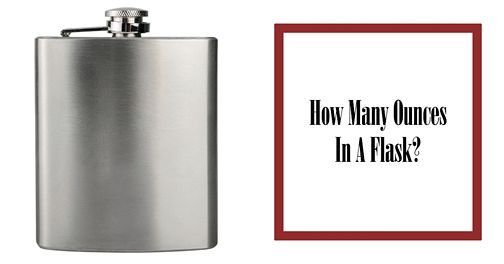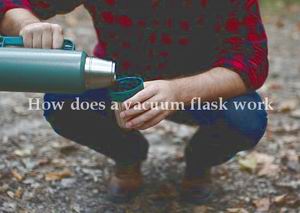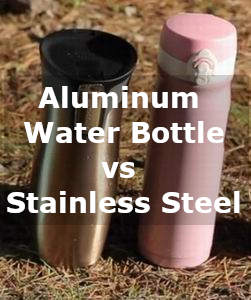
Field Bottle Gram Count: Size Chart and Calculation Example
Bottles are essentially small bottles often used to store drinks. One of the most popular units of measurement for vials is the ounce. Most people do not understand how many ounces are in every type of bottle.
A bottle size chart can help those who love cocktails, beer, or another beverage that can be easily stored in a small bottle. In this post, we will discuss the dimensions, the number of grams they contain, and an example calculation.
With the help of this table, you can choose the right size bottle to store your favorite beverage. Knowing the number of ounces in a bottle is also helpful for drinks that require a specific number of ingredients.
Part 1: Ounces and de erlenmeyer
Ounces are a weight measure used in countless countries around the world. In the traditional English system, an ounce is 28.35 grams; in the United States, an ounce is 28.35 grams.
Vials are the owners of water and are often used to store vodka, whiskey, rum, and other strengths. Bottles typically have a capacity of 50 to 2000 mL but can be larger.
In the beverage industry, back lugs were usually used to transport traveling spirits. Each bottle has its own size and may vary from manufacturer to manufacturer. They had handles to facilitate handling and some were made of precious metals such as silver or gold.
Section 1.1: Definition of an ounce
Ounces are a commonly used weight measure in the United Kingdom and the United States. Collective ounces have a variety of meanings, each used according to a specific context and domain. However, the most common is the highly called Upton Oune, which equals 28 grams.
Ounces were originally defined as the weight of the first barley grain. In England, it was defined as 1/16th pound in the 14th century, and in the United States, the 19th-century meaning was set at 1/16th pound (Avoirdupois).
There is also the so-called thermal ounce, used in the Russian Federation and other countries of the former Soviet Union to measure the size of water. The meaning is exactly the same as 29; 57mL is close to the Apon and fluid ounce values used in other areas.
Despite the complexity and diversity of definitions, ounces remain a fairly comfortable unit of measurement, especially for consumer products. If you are planning to travel or purchase products abroad, you can easily convert between values and dimensions given the correct meaning.
Chapter 1.2: Vial Definition
A field bottle is a small reservoir that fits easily into a bag or backpack. They can be made of any type of material, including metal, glass, and plastic.
Typically, flasks range in size from 4 to 16 ounces (118 to 473 milliliters) and are used to store alcoholic or non-alcoholic drinks such as water, tea, coffee, and alcohol.
To determine the true size of a field bottle, it must be measured. This can be done with the help of a measuring cup or ruler. However, manufacturers tend to state the size of the field bottle on the packaging or in the product description.
When selecting a field bottle, it is important to consider not only the size but also the fabric the bottle is made of, comfort and reliability.
Section 2: Field Bottle Size Chart
Olenmeyer-the usual term for a spacious barrel used for transporting liquids. Typically, field bottles are used during picnics, fishing, and camping. They come in all kinds of sizes and shapes to meet the needs of all kinds of situations. In this section, we look at a table of field bottle sizes widely used in everyday life.
The table clearly shows that flasks vary in size from 4 to 12 ounces (118 to 354 ml). The size of the jug should be chosen based on your own needs. The best known are the 6 oz. and 8 oz. pots, which are mostly used for passionate drinks such as coffee and glühwein. To determine the format field bottle you need, you must consider the amount of water you want to consume and the amount you plan to use the field bottle for. Substance and ease of use are also very important considerations.
Chapter 2.1: A table of standard dimensions for jugs will not fill all bottles
For ease of use and comparability, flasks generally have normal dimensions oriented to ounces or milliliters. The table below shows the normal-size pumping.
Bottle Type|Volume (oz)|Minimum Size (ml)|Maximum Size (ml)
4 oz bottle| 4 fl oz118 ml | 128 ml
6 oz bottle| 6 fl oz | 177 ml | 192 ml
8 oz Bottle| 8 fl oz | 236 ml | 256 ml
12 oz Bottle| 12 fl oz | 355 ml | 384 ml
16 oz bottle| 16 oz| 473 ml | 512 ml
These standard content measurements are often used in the production and sale of spirit, cosmetics, medicines, and other watery products.
When selecting a bottle, one should consider not only the size, but also the material it is made of, its shape, and its strength.
Chapter 2.2: Tables with Field Bottle Dimensions in Different Countries
Field bottles are one of the most famous owners of drinks during treks, camping tours, and fishing trips. Sizes generally vary from country to country and can be represented by different units.
Land|Contents of the bottle|Unit
V. S. 8 U.S.A.
Canada| 10 oz.
United Kingdom| 6 oz.
Australia| 5 oz.
Germany| 8 oz.
France| 4 oz.
The unit of measurement used in most countries is the ounce (or oz), which equals approximately 28.35 milliliters. However, some countries use other units, for example, the ounce (U.S.), which is France. This equals 30 milliliters.
When buying a field bottle, it is important to look at the size of the field bottle and make sure it meets your personal needs and idea of use.
Part 3: Calculating our number in field bottles
Calculating our number in field bottles is important to determine the amount of water that can be stored or taken into account in the bottle. This calculation can be performed using a few simple formulas and size tables.
The first step is to determine the size of the vial. This can be done by measuring the dimensions of the bottle in centimeters and applying the appropriate formula. For example, if the Erlenmeyer has a diameter of 10 cm and a height of 20 cm, the size can be calculated using the formula V =πr²h where v – size, π – number of pies, r – ray (radius), h – height from Erlenmeyer.
After determining the size of the field bottle, you can use the size chart to calculate the amount of water you can gram. For example, if the field bottle is 500 ml, you can use 16.9 oz. You can also apply the formula to convert ML to oz: 1 oz = 29.5735 ml.
It is important to consider that pots come in all shapes and sizes. Therefore, for a clear calculation, you will need to use a specific size chart or take offline measurements and use the correct formula.
Chapter 3.1: Bottle Sizing Techniques
There are several ways to measure bottles. Let’s look at a few:
- Measuring: This is a special barrel that has markings on the wall indicating the size of the water. This is a more accurate way to measure water and is often used in chemical and medical labs.
- Measuring cup: This is a beaker with markings on the wall indicating the size of the water. However, it is less accurate than a measuring cup.
- Hydrostatic weighing method: This method is that the measuring cup is filled with liquid up to a certain value and counted on a scale and the size of the water is planned with the help of a special formula.
The choice of the method of measuring Erlenmeyer’s size depends on the specific task and the inexpensive tools available.
Section 3.2: Example of calculating the number of US with a measuring pump
To calculate the number of US in Erlenmeyer, you need to calculate the size of the Erlenmeyer and the density of the Erlenmeyer preparation. the Erlenmeyer size can be measured in milliliters (ML) or ounces (OZ). Product density can be measured in grams per cubic centimeter (g/cm3) or pounds per cubic inch (lb/in3).
For example, if you have a 500 mL bottle and want to know how many ounces are in it, you need to convert the size to ounces. To do this, we need to assume that one ounce equals 29.5735 mL. Thus, 500 mL is approximately 16,907 ounces.
Another example: there is a 32-ounce barrel. It contains whiskey with a density of 0.89 g/cm3. To find the number of grams of whiskey in the bottle, we need to multiply the size of the bottle (32 ounces) by the conversion ratio (29, 5735 ml/oz) and the density of the whiskey (0, 89 g/cm3). The number of flasks is approximately 892. It appears that the flask contains about 892, 71 g of whiskey.
Section 4: All the different types
Erlenmeyer is the preferred small-sized barrel that can be used for the transport and storage of liquids. There are different types of flasks that distinguish themselves through their own sizes, systems, and preparation materials. Some are shown below.
1. Stainless steel flasks
Stainless steel bottles are the most well-known. They are lightweight, durable, small in size with a leak-proof lock and a comfortable lid. Stainless steel also withstands corrosion and is easy to maintain.
2. Aluminum bottle
Aluminum cans have similar qualities, including the appearance of stainless steel, but are lighter and less expensive. However, hardfacing bottles are not as sustainable as stainless steel bottles and may be more susceptible to corrosion.
3. Plastic bottle
Plastic bottles are the lightest and least expensive version of plastic bottles. They usually have a half-open lid that can be lost. However, plastic bottles can be easily modified, do not leave the taste of water and have the opportunity to be used as sports bottles.
4. Bottle with leather bag
Bottles with leather cases are a traditional and stylish option. They range in size from 4 to 16 ounces and have every opportunity to be made of stainless steel, silver, or shiny metal. However, they are often more expensive than pots of other materials.
Section 4.1: Iron bottles
Metal pots are a well-known option for storing liquids and are used in many areas of life. They can be made from all kinds of metals, including stainless steel, aluminum, and titanium, and are available in a variety of sizes.
What sets steel buses apart is their strength and durability, making them resistant to high temperatures and impacts. This makes them ideal for people who walk, camp, fish, and do other outdoor activities.
Metal field bottles are still famous among travelers, who can use them to drink water or other beverages on trips.
If you are planning to buy an iron field bottle, it is important to take into account the size you need. The sizes could vary from our pair to several liters, so it is fundamentally important to choose the correct value for your application.
Some of the well-known manufacturers of iron field bottles include Yeti, Hydro Flask, and Stanley. When choosing a field bottle to fabric made, size, ease of use, and design.
Chapter 4.2: Field Bottles in Other Materials
There are also stainless steel field bottles from other materials on the market. This chapter looks at the most popular.
Aluminum Bottles
Aluminum bottles are light in weight but not as strong as stainless steel. They are usually small in size and are often used for short treks. It is still worth noting that aluminum can react with acids to lie. Therefore, these flasks are not suitable for the accumulation of brutal liquids.
Thermoplastic jugs
Soft thermoplastic pots are simply compressed and take up minimal space when empty. They have every opportunity to be used for the storage of water and other liquids but are not as strong as metal pots. In addition, this material has the property of absorbing aromas and flavors, for example. This means that you cannot store aromas or brutal liquids in these flasks.
Glass Bottles
Glass bottles are not recommended for use during walking tours or other activities in nature. They are suitable for storing alcoholic beverages and other liquids to family standards.
Plastic Bottles
Plastic pots are considered lighter and less expensive versions. They are good for conserving water but are not as strong as metal pots. In addition, they have all the opportunity to contain harmful substances such as bisphenol A (BPA), so it is worth choosing a model that does not contain this component.
Part 5: Tips for Selecting and Using Jugs
Field bottles are a must for hardcore drinkers. It allows you to drink large quantities of water during long walks or treks in the mountains. Proper selection and proper use of water jugs will certainly help prevent health problems and make the most of outdoor activities.
Before purchasing a field bottle, you must determine the size. For short treks, a 0.5-1 liter field bottle is fine; choose a longer trip preferring a model with a capacity of 1.5 liters or more. Also pay attention to the materials you cook with. Stainless steel or aluminum canteens are not only lighter but also more durable. However, if not used correctly, they can leave a metallic taste in the water. If you want to avoid this problem, choose a field bottle of polymer material (e.g. thermoplastic).
Proper use of field bottles is also important for your well. Field bottles should be kept clean and not used for different drinks to prevent contamination. Using bottles for carbonated beverages is not recommended – these can destroy the substance and cause leaks due to high pressure.
It is important to consider the sanitary characteristics of the cafeteria. After each use, they should be cleaned and dried to prevent the formation of bacteria. For more thorough cleaning, a special scrub brush can be used to clean the pots.
When following these tips, be sure to select and use the appropriate tips for your outdoor adventure.
Chapter 5.1: Select field bottles based on volume
The size of the field bottle depends on different points, such as the duration of the trek and the amount of drinking water you want to carry. A wrong choice of field bottle size can lead to history if there is not enough water on the trail or if the field bottle becomes increasingly useless each day.
Field bottle size depends on personal needs and walking criteria. When choosing a field bottle, the amount of water consumed during the day should be taken into account. number of people on the trip, the planned duration of the route, and the intensity of physical exertion.
Typically, a field bottle with a capacity of 1 to 2 liters is recommended for a day’s walk. However, if water is scarce in the area, you may need to increase the size of your field bottle or bring an extra water tank. It is also worth taking into account that you will have to drink more water in the mountains as it evaporates more easily due to the low humidity.
- Choosing the right size field bottle must start with your unique needs and walking criteria.
- It is recommended that you take one to two liters of field bottles with you for a day’s walk.
- If water is scarce on a route, whether or not there is enormous physiological stress, you should increase the size of your field bottle or take an extra water tank.
– On the trail, water evaporates more quickly due to the low humidity, so more water should be drunk.
Chapter 5.2: Recommendations for the Use and Care of Water Bottles
To keep your water bottle faithful for a long time, you need to follow a few rules. This chapter describes how to properly use and care for your pump.
- – Do not use vials for acidic liquids. The water will attack the material in the vial and may cause cracks or leaks.
- – Wash bottles regularly with warm water. This will certainly help prevent unpleasant odors from inside the bottle.
- – Be careful not to subject the vial to strong shocks or drops – dropping the vial can damage it and prevent it from closing properly.
- – Do not store sharp objects inside the vial – sharp stones or iron objects can destroy the inside of the vial.
If these standards are observed, the bottles can be used successfully for a long period of time. It is also recommended to ventilate the vial from time to time to avoid unpleasant odors and to avoid putting hot liquids in the vial to prevent swelling or damage to the walls.
Answers to Questions
Q: Can I use the sizing chart to calculate the amount of water to pour into a special water bottle?
A: Yes, it is possible. To do this, you will need to determine the size of the bottle and look up the corresponding number of ounces in the size chart. You can then calculate the amount of water by multiplying the number of ounces by the appropriate factor for the selected water.
Q: How do I calculate the number of ounces of water in a water bottle if only milliliter sizes are common?
A: To calculate the number of ounces in a water bottle from the milliliter size, divide by 29.57. For example, a 500 ml measuring bottle holds 16.91 ounces of water.
Q: Which size chart should I use for spirits and which factor should I calculate?
A: For spirits, you must use a sizing chart that does not include soda or syrup. The coefficients for spirits are based on their strength. For example, a factor of 0.88 always applies to vodka, while a factor of 0.45 applies to beer.
Q: Can the size chart be different for different countries?
A: Yes, the sizing chart will vary from country to country. For example, the United States uses a measurement system based on fluid ounces, while in the United Kingdom, a system based on weight ounces is more prevalent. In this regard, it is necessary to find out which size system is used in a particular country before implementing a size chart.
Q: How do I know the size of a bottle if it is not marked or labeled?
A: If the flask is not marked or stamped, you can determine the size by filling the flask to the rim with a measuring cup or by






